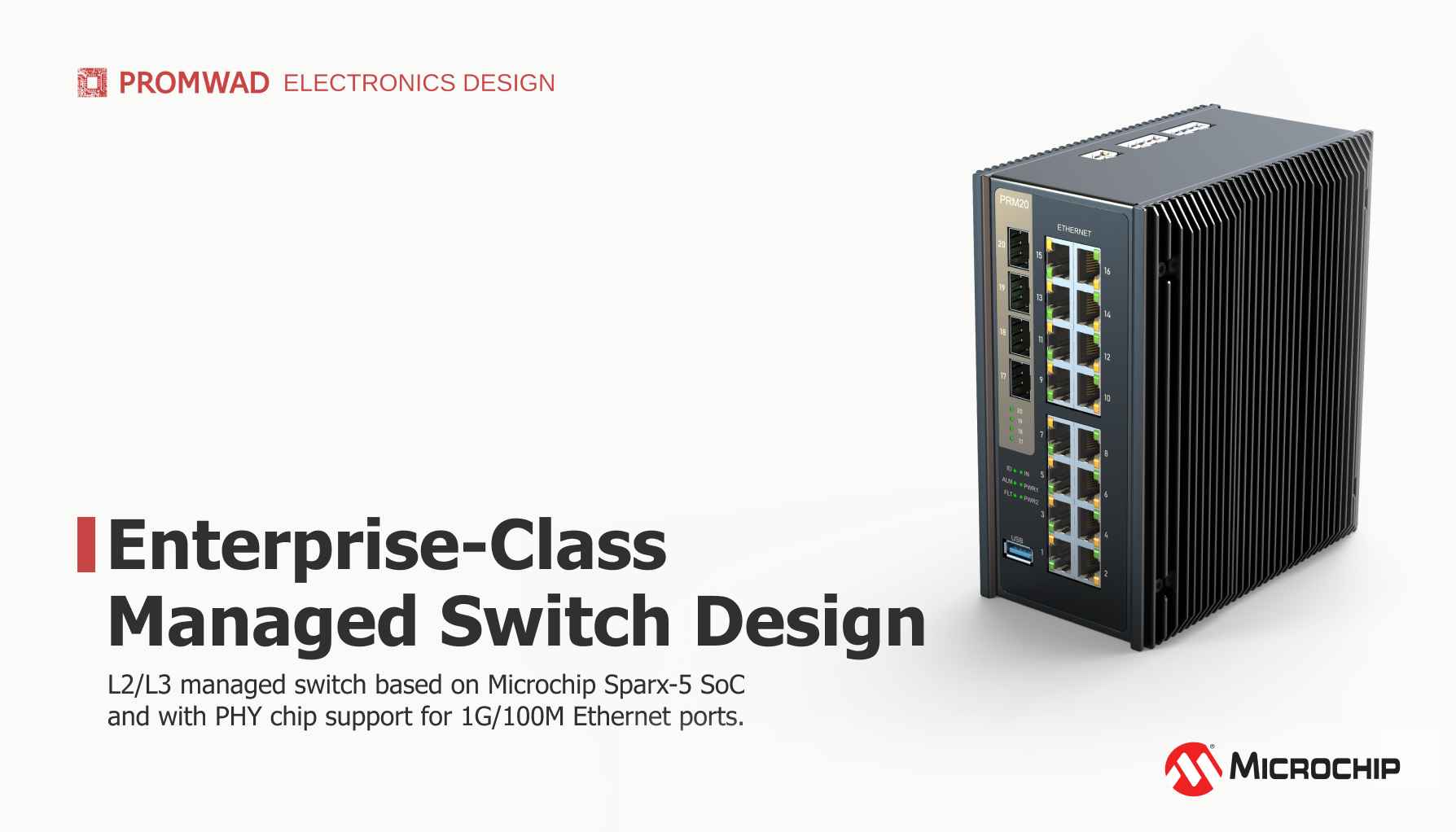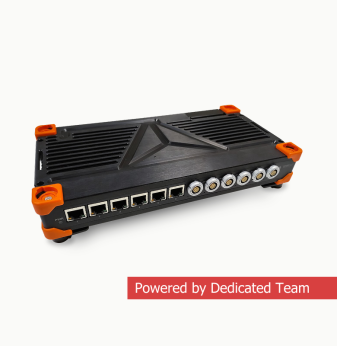Enterprise-Class Managed Switch Design
Project in a Nutshell: We designed an advanced L2/L3 managed switch for a leading telecoms equipment supplier using Microchip's SparХ-5 SoC. The modular design provides a flexible configuration, and the entire system runs on fully passive cooling with rugged aluminium heat sinks. It is optimised through thermal modelling, making it reliable and energy efficient
Client & Challenge
A leading provider of telecom equipment for the enterprise segment intended to expand its product line of devices to meet the growing demand for high-speed and reliable networks. They approached Promwad to develop a new generation of L2/L3 manageable switches that would provide high performance, flexibility and easy integration into their existing infrastructure.
Solution
1. Hardware Design
The hardware platform of the L2/L3 managed switch is based on components from Microchip:
- SparХ-5 SoC;
- PHY chips for 1G/100M Ethernet ports;
- PoE controller.
The device supports dual power supply inputs, with software monitoring both. If both inputs fail, the software can send an SNMP Dying Gasp packet to a designated network host.
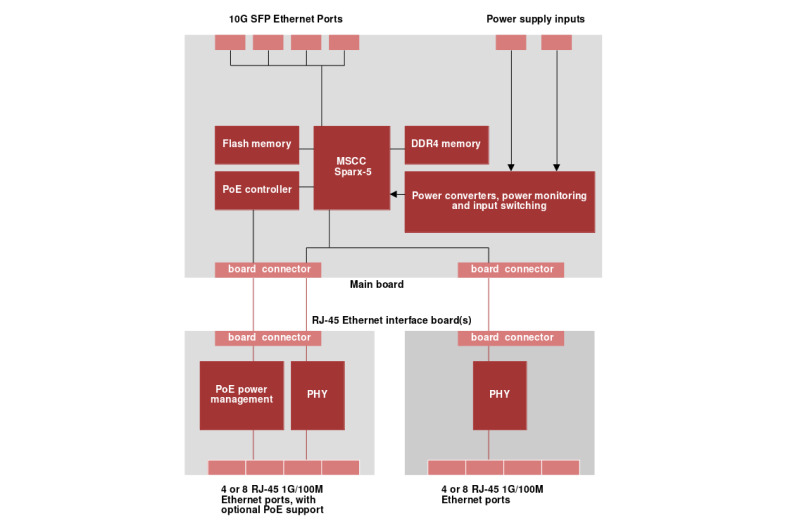
Architecture diagram of L2/L3 managed switch
The switch has a modular design. RJ-45 1G/100M boards are available in several options:
- 4 or 8 ports;
- with or without Power over Ethernet (PoE) support.
The main board supports the installation of 1 or 2 RJ-45 boards. The current design supports PoE functionality only on a single board. However, it can be modified.
The power supply ranges from 10 to 60V without PoE (PoE requires 50-57V). All internal components are galvanically isolated from the external power supply.
2. Software Development
The device software is based on the Microchip IStaX switch application, which implements many features of an L2/L3 switch and allows configuration using a CLI or web interface. To support custom hardware configuration during the build, we changed some parts of the IStaX application and software, such as the Linux OS and bootloader.
3. Industrial and Mechanical Design
The switch comes in a durable steel enclosure (case) with aluminium alloy heatsinks and can be mounted on a DIN rail.
We conducted a thermal simulation of the device to find overheating components and solve these problems before the start of manufacturing.
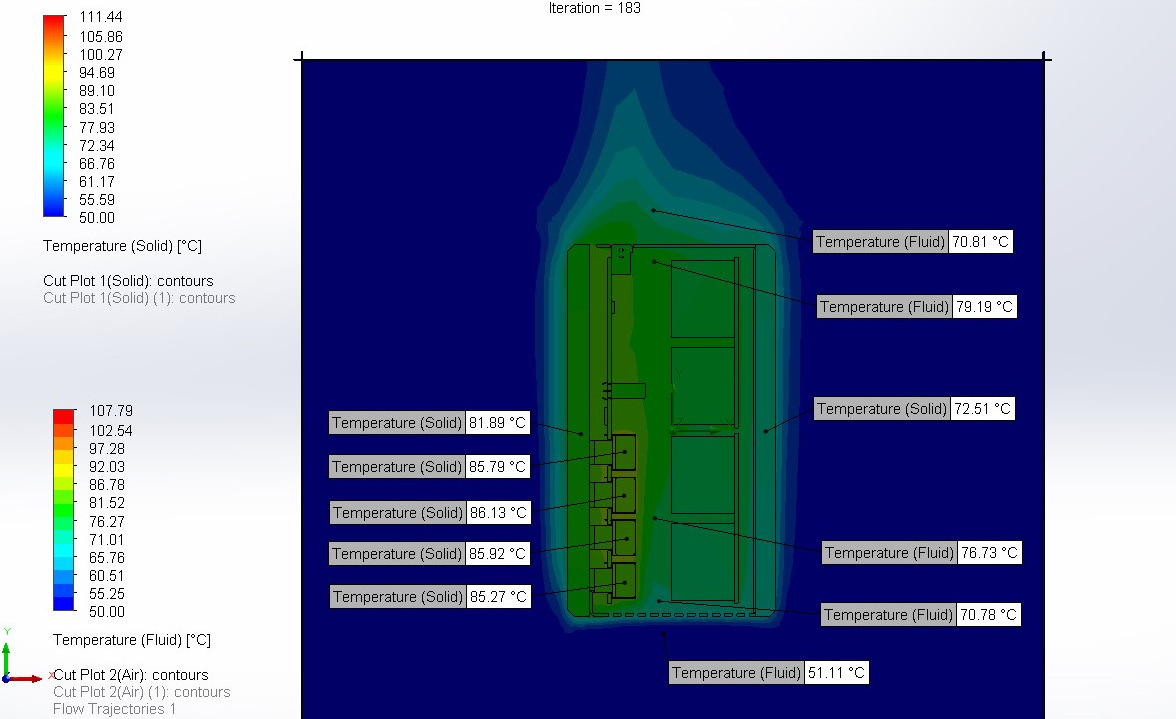
Thermal simulation of the device operation, showing the temperature distribution on components and in the environment
Thermal simulation helps us find hot components on the PCBs at the design stage. Then, we can change the location of the component, change the PCB, change the thermal pad, or choose another solution to reduce the temperature of the critical components.
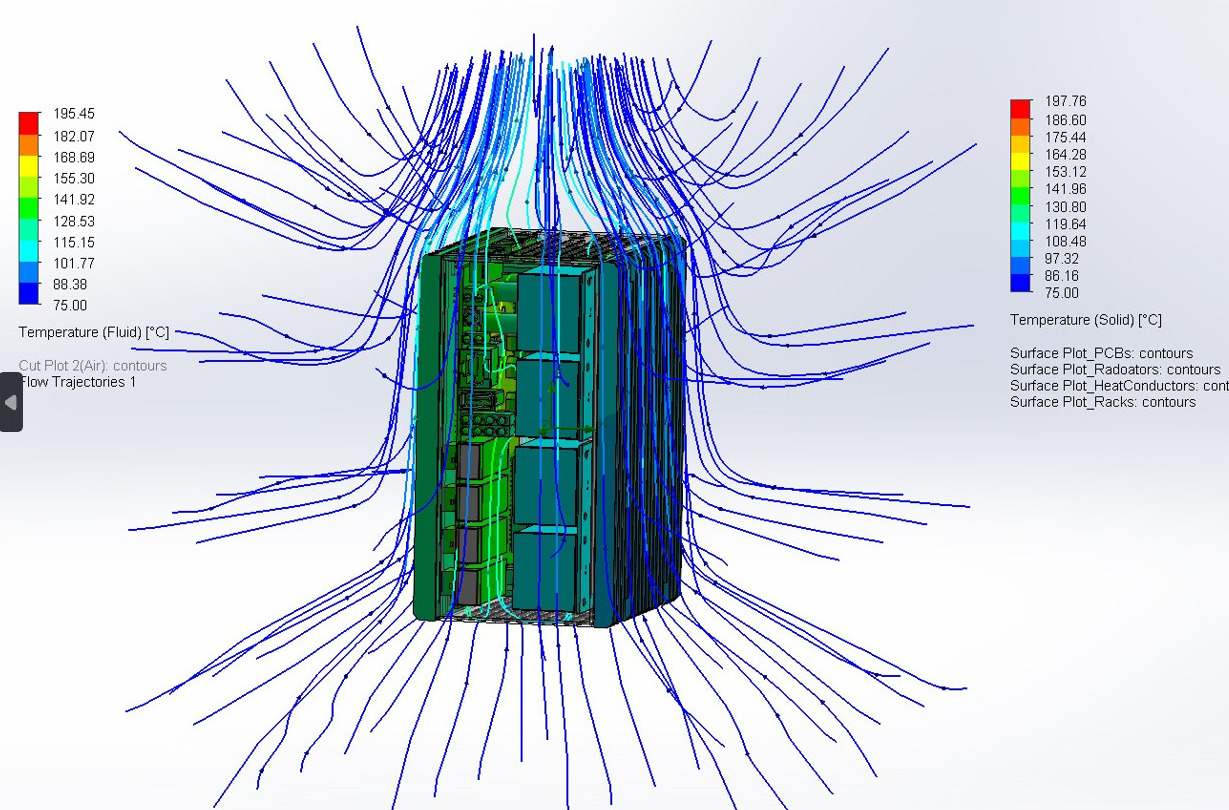
Visualisation of the airflow around the unit, which confirms our calculations and the efficient heat exchange: the air is heated at the radiators
The switch cooling system is entirely passive. All heat exchange is carried out through two radiators on both sides of the device.
Business Value
Our client added a solution to their product line, their end users can adapt and customise it depending on their needs. The passive cooling system will provide reliability with minimal maintenance, thus reducing operating costs for end users.
By bringing such a solution to the market, our customer will maintain their position as an industry leader.
More of What We Do for Switches
- Custom Stackable Switches: explore our expertise in Microchip SDK-based switch development (WebStaX, SMBStaX, IStaX).
- Network Switch for Data Acquisition System: a case study of developing an industrial network switch for Dewesoft, a developer of data acquisition systems.
- Ethernet Switches Design with Our Microchip SLA: сheck out our research on the benefits of Ethernet switches based on the IStaX SDK.

